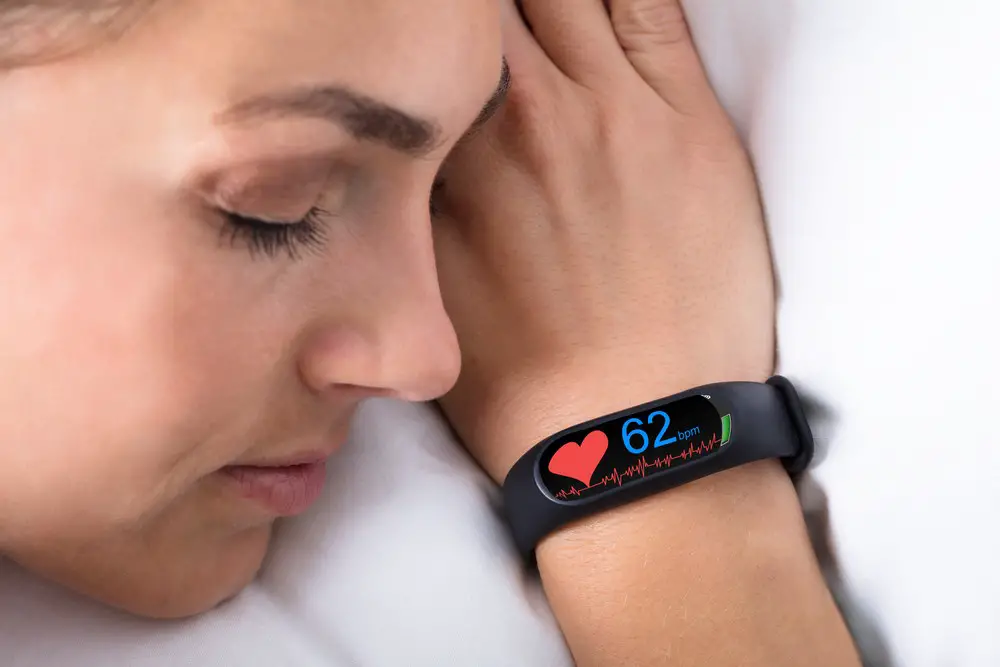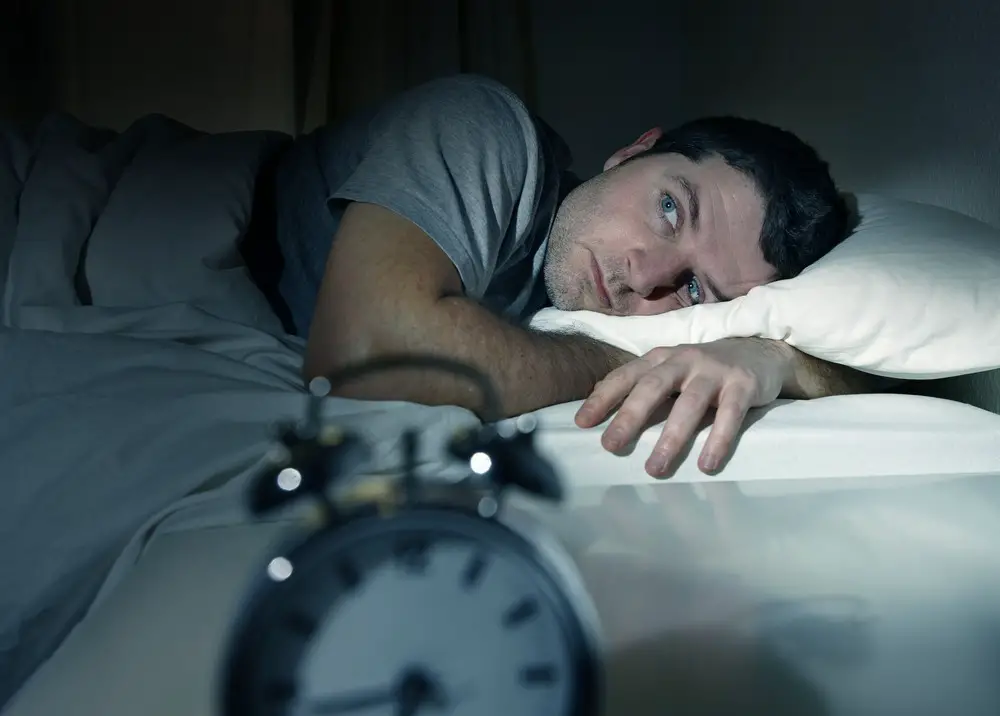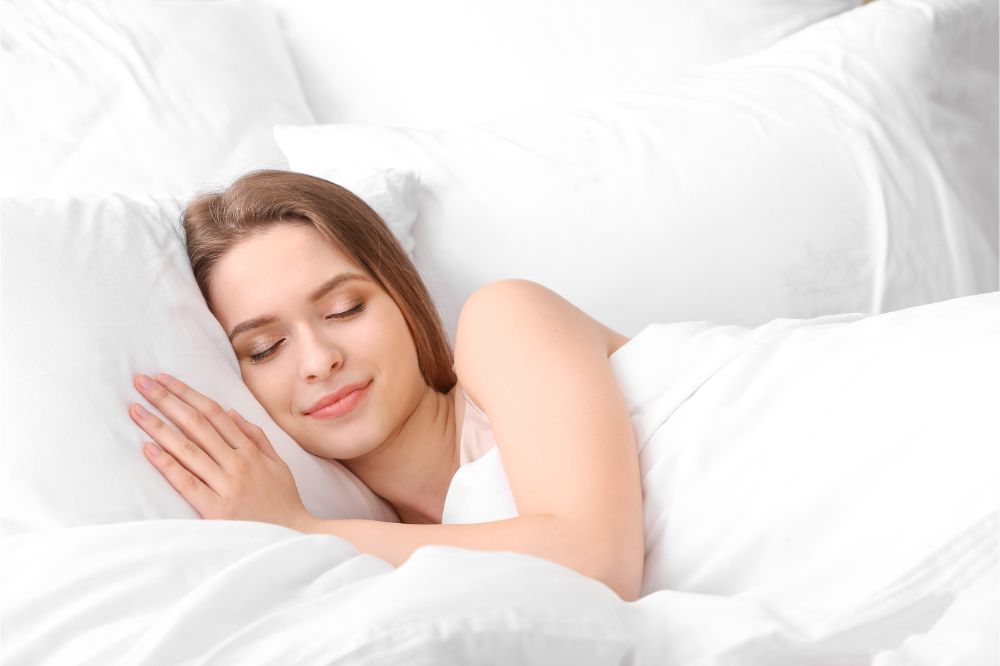As a BetterHelp affiliate, we receive compensation from BetterHelp if you purchase products or services through the links provided
In recent years, sleep technologies have significantly advanced, revolutionizing how people sleep and monitor their sleep health. With an array of innovative products such as sleep trackers, smart beds, and devices designed to optimize the sleep environment, these technologies aim to provide better understanding and solutions for a good night’s sleep.
As the market for sleep technologies expands, researchers and companies focus on providing comprehensive and user-friendly tools that enhance sleep quality and cater to individual needs. From addressing sleep disorders to designing personalized sleep schedules, these technologies transform how we approach sleep health and its impact on our overall well-being.
Key Takeaways
- Sleep technologies have advanced rapidly and offer a variety of solutions for improving sleep quality and monitoring sleep health.
- Data-driven sleep trackers and environmental optimization tools are becoming increasingly popular and accessible.
- Emerging technologies have the potential to revolutionize how we manage sleep disorders and enhance cognitive performance during periods of wakefulness.
Evolution of Sleep Technologies
From Electric Light to Streaming Services
The introduction of electric light over a century ago greatly impacted sleep patterns by allowing people to stay awake and active much longer into the evening. As technology continued to develop, so did its influence on sleep. The widespread availability of streaming services resulted in increased screen time, which can lead to late-night binge-watching sessions and disrupted sleep schedules. These innovations have significantly impacted how and when people sleep.

Influence of Wearable Technology
Wearable technology has emerged as an invaluable tool for understanding and tracking sleep patterns. Smartwatches, fitness trackers, and smart jewelry are some of the most popular wearable devices that aid in monitoring sleep. These devices use built-in sensors to detect movements and other physiological markers such as heart rate and body temperature, providing users with data-driven insights into their sleep quality.
IoT
The Internet of Things (IoT) has allowed the development of smart home technologies that interact with wearable devices. By connecting wearable technology and IoT systems, users can create a more conducive sleep environment tailored to their needs. For example, smart thermostats can be programmed to adjust room temperature based on a person’s sleep pattern, promoting a more comfortable and restful sleep environment.
The evolution of sleep technologies reflects the ongoing dedication to improving sleep quality and understanding the complex factors that influence it. As technology advances, one can expect to see even more innovations in the field of sleep science.
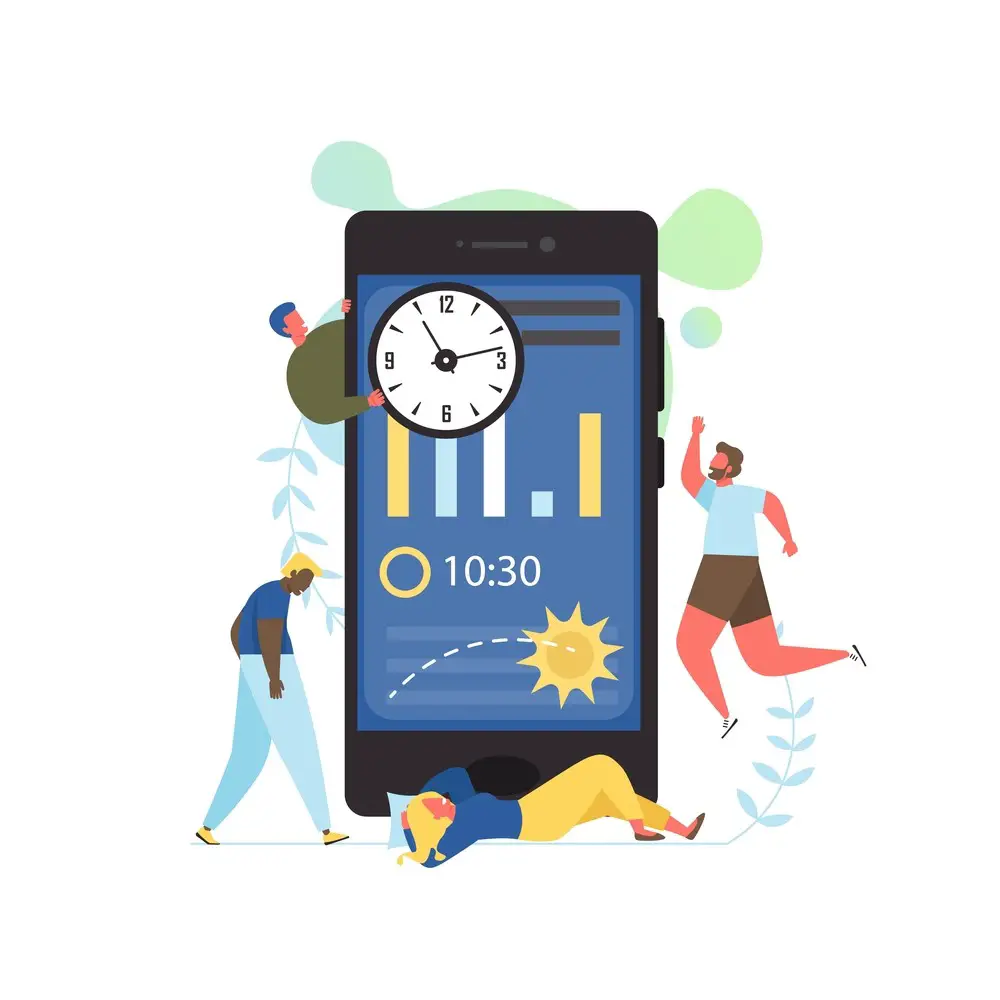
Sleep Tracking and Analysis
Understanding Sleep Cycle and Circadian Rhythm
Sleep is a crucial biological process; to analyze it effectively, it’s essential to understand the sleep cycle and circadian rhythm. The sleep cycle consists of several stages: light sleep, deep sleep, and Rapid Eye Movement (REM) sleep. Circadian rhythm is our internal biological clock regulating sleep-wake cycles, typically lasting 24 hours. Sleep technologies aim to monitor and analyze these cycles and rhythms to help users better understand and improve their sleep quality.
Smartwatches and Fitness Trackers
Smartwatches and fitness trackers have become popular sleep-monitoring devices due to their accessibility and ease of use. These gadgets often track sleep by monitoring key parameters such as heart rate, motion, and noise. Well-known sleep trackers include the WHOOP 4.0, Biostrap Active Set, Sleepon Go2sleep Tracker, and Wellue O2Ring. These devices can help users track changes in their sleep patterns, providing data that may be used to make adjustments to improve sleep quality.
Sleep Apps and Smartphone Integration
In addition to wearable devices, sleep apps are another innovative approach to sleep analysis. These apps can be installed on smartphones and may use the device’s built-in sensors or integrate with wearable devices to collect sleep data. Examples of sleep apps include Rise Science Sleep Tracker and Eight Sleep Pod 3 Cover.
Sleep apps can analyze sounds, movements, and behaviors during sleep, providing insights into sleep duration, quality, and disturbances. They can also help users understand their time in different sleep stages, such as REM sleep. By integrating with smartphones, these apps enable users to receive notifications, reminders, and personalized suggestions to improve sleep habits based on analyzed data.
The increasing interest in sleep technology is paving the way for a data-driven revolution in sleep science. Smartwatches, fitness trackers, and sleep apps contribute to a better understanding of sleep cycles, circadian rhythms, and overall sleep health. As these technologies continue to advance, they have the potential to enhance people’s sleep quality and well-being significantly.
Sleep Environment Optimization
Comfort
One essential aspect of a good sleep environment is comfort. Ensuring your bed, pillows, and bedding are designed for optimal sleep is crucial for a restful night. Smart mattresses and pillows can adjust their form and firmness to suit your preferences, enhancing your comfort and sleep quality.
Temperature and Humidity Control
Effectively regulating your bedroom’s temperature and humidity is essential for a better sleep experience. Maintaining a consistent sleep environment with ideal temperature and humidity levels can minimize problems like sweating and feeling too cold. Some advanced sleep technologies allow for temperature regulation, ensuring that your bed stays at the optimal temperature throughout the night, while others can control the humidity levels in the room.
Smart Mattresses and Pillows
Smart mattresses and pillows use advanced technology to help you experience better sleep. By incorporating features such as machine learning and sensors, these products can adjust their form and firmness to suit your sleeping position, minimizing discomfort and improving sleep quality. In addition, some smart mattresses can gather data on your movement and position while you sleep, which can be helpful for understanding and improving your sleep patterns.
White Noise Machines and Soothing Sounds
White noise machines and soothing sounds can benefit individuals who struggle to fall asleep due to environmental noise or distractions. These devices emit consistent and gentle background noise that can help mask unwanted sounds and promote relaxation. In addition, numerous applications and devices are available that provide a variety of calming and relaxing soundscapes that can help you achieve a more peaceful and restful sleep environment.
You can create an optimized sleep environment that promotes restorative and undisturbed sleep by implementing sleep technologies that focus on comfort, temperature control, smart mattresses and pillows, and calming noises.
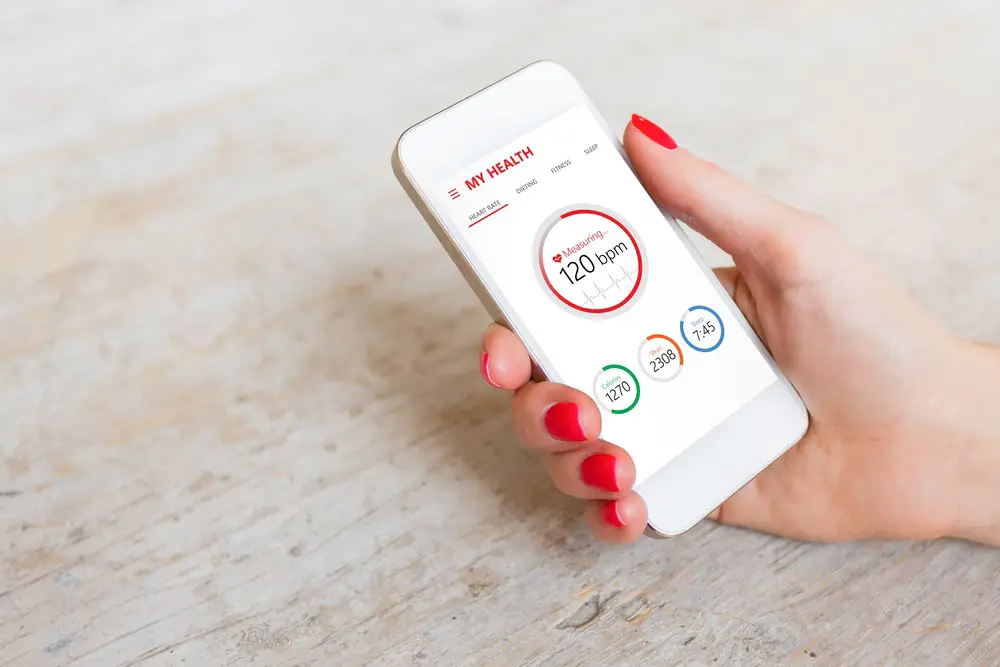
Managing Sleep Disorders
Addressing Insomnia with Technology
One way technology can help manage insomnia is through devices that monitor heart rate and sleep patterns. These gadgets can provide users with personalized insights on improving their sleep quality. Additionally, mobile applications are designed to guide individuals experiencing insomnia through relaxation techniques and cognitive behavioral therapy, which are known to be effective in treating the condition.
Dealing with Sleep Apnea and Snoring
Sleep apnea, particularly obstructive sleep apnea, can be managed using continuous positive airway pressure (CPAP) devices that help keep airways open during sleep. Moreover, recent advancements in sleep technology involve stimulation of the hypoglossal nerve to prevent airway obstruction, providing an alternative option for those who cannot tolerate CPAP machines.
In the case of snoring, various sleep technology solutions, such as positional pillows and wearable devices, detect the body’s position during sleep and encourage side-sleeping to reduce the occurrence of snoring. It is important to note that a high body mass index (BMI) can contribute to snoring and sleep apnea, so incorporating lifestyle changes may also be beneficial.
Support for Narcolepsy and Other Sleep Disorders
Technological advancements can support individuals with narcolepsy and other sleep disorders by helping them monitor their sleep patterns and make appropriate adjustments. Prescription medications, such as modafinil, can be used to manage excessive daytime sleepiness. Non-pharmacological interventions, like scheduled daytime naps and good sleep hygiene, can also enhance the quality of life for people with narcolepsy.
However, it is important to be aware of potential issues such as orthosomnia—a preoccupation with perfect sleep data leading to anxiety—as relying too heavily on sleep technology may worsen sleep problems. Additionally, seasonal affective disorder (SAD), often characterized by heightened sleep issues during certain months, may require additional interventions such as exposure to light therapy to support healthy sleep patterns.
Emerging Sleep Technologies
Sensory Stimulation Technologies
Sensory stimulation technologies are innovations that focus on manipulating various sensory inputs to help improve sleep quality. These devices often utilize sounds, lights, or tactile sensations to influence the user’s sleep-wake cycle, promoting relaxation and preventing disruptions.
Some popular sensory stimulation technologies include white noise machines and light projectors that simulate a calming night sky. These devices target the auditory and visual senses, helping individuals drift off to sleep more easily.
Virtual Reality Visors and Dream Management
Virtual reality visors are becoming increasingly popular for their potential to revolutionize the realm of dream management. By immersing users in a simulated environment, these devices can create more controlled and pleasant dream experiences.
In addition, virtual reality visors can help users better understand their sleep patterns by providing visualizations and data analysis. This information can help individuals adapt their sleep habits for improved quality and consistency.
Pyjamas Embedded with Sensors
Unlock the secrets of a better night’s sleep with technologically advanced pajamas embedded with sensors. These cleverly designed pajamas track changing postures and breathing patterns throughout the night, providing an in-depth analysis of your sleep quality and potential disruptions. Use this data to identify issues such as sleep apnea or restless leg syndrome quickly and efficiently, so you can get the treatment you need without delay. With these revolutionary pajamas, gain an insightful understanding of your sleeping patterns and take control of your rest. Enjoy a good night’s sleep from now on!
Balancing Technology and Sleep Hygiene
Reducing Blue Light Exposure and Screen Time
Exposure to blue light emitted from electronic devices like phones and tablets can negatively affect sleep quality. Blue light suppresses the production of melatonin, the hormone responsible for regulating sleep and wakefulness. To combat this, individuals can use apps that filter out the blue light or switch their devices to “night mode.” Additionally, it is vital to limit screen time and establish a technology-free period before bedtime, which allows the brain to relax and wind down for the night.
Setting Boundaries with Smart Devices
While smart devices can offer sleep advice and help regulate sleep patterns, setting boundaries and maintaining a technology-free sleep environment are essential. Users should avoid checking emails, browsing social media, and engaging in activities stimulating the mind before bed. Introducing natural light into the bedroom to wake up gradually and reframing the usage of smart devices as tools to enhance sleep hygiene, rather than distractions, can improve sleep quality.
Understanding the Limitations of Sleep Technologies
Sleep technologies, such as wearables and care robots, provide valuable information about one’s sleep patterns. However, it is crucial to recognize their limitations. No device can accurately mimic the in-depth analysis of brain activity during sleep conducted in a sleep lab. Therefore, users should use sleep technologies as supplementary tools to support sleep hygiene practices. To achieve the best results, individuals are encouraged to follow expert sleep advice and consult a medical professional if they face persistent sleep issues. Maintaining a balance between technology usage and maintaining proper sleep hygiene practices can greatly enhance overall sleep quality.
Cognitive Enhancement and Sleep
Wakefulness Drugs and Modafinil
Wakefulness drugs, such as modafinil, significantly enhance cognitive performance, particularly in sleep-deprived individuals. Modafinil is known for its cognition-enhancing effects and is reported to keep people awake and alert for several days at a time. Some scientific studies support these claims, while others show that the effects are similar to caffeine.
| Wakefulness Drug | Effects |
|---|---|
| Modafinil | Enhances cognition in sleep-deprived individuals |
It’s essential to note that while modafinil may offer temporary benefits, long-term usage could lead to negative side effects, including sleep disruptions, dependence, and potential health risks. Generally, improving sleep quality is a more sustainable approach to cognitive enhancement.
Meditation and Mindfulness Practices
Meditation and mindfulness practices are gaining popularity as effective ways to improve sleep and, as a result, enhance cognitive performance. These practices involve focusing on the present moment and creating awareness of oneself, thoughts, and the environment.
- Mindfulness meditation: A technique that cultivates an attentive awareness of the present moment, often through activities such as deep, slow breathing, body scanning, and non-judgmental observation of thoughts and emotions.
- Loving-kindness meditation: A practice focused on cultivating love and compassion for oneself and others, often involving repeating phrases or visualizations related to these emotions.
Several studies have shown that meditation and mindfulness can improve sleep quality, positively impacting cognitive performance. By reducing stress, anxiety, and hyperarousal, these practices can moderate racing thoughts and help create a mental environment conducive to relaxation and restorative sleep.
Frequently Asked Questions
How do sleep tech devices work?
Sleep tech devices utilize various sensors and technologies to monitor and analyze sleep patterns and quality. These devices track different aspects of sleep, such as heart rate, breathing, movements, and more. They then provide data and feedback to the user, usually through a mobile app or website.
What is the cost of ProSomnus products?
ProSomnus products are typically available by prescription and are tailored to the individual’s needs. The exact cost may vary depending on the specific product and any required accessories or customization. It is recommended to contact ProSomnus or an authorized provider for the most accurate pricing information.
Which sleep technologies help with snoring?
Various sleep technology products can help with snoring. Some examples include anti-snoring pillows, nasal dilators, and continuous positive airway pressure (CPAP) machines. These devices work to either open airways, adjust head and neck positioning, or provide positive air pressure to reduce snoring occurrences.
Are there warranties for sleep devices?
Most sleep technology devices have a warranty covering manufacturing defects or malfunctions during a specified time frame. Warranty terms may vary depending on the specific device, manufacturer, and where the product is purchased. It is advisable to check the warranty details for each sleep technology device individually.
How effective are sleep tech products?
Sleep tech devices can help improve sleep quality and offer valuable insights about sleeping habits. However, their effectiveness largely depends on the specific device, proper usage, and individual sleep needs of the user. It is important to select the appropriate sleep technology product carefully and follow the usage guidelines for optimal results.
Can sleep devices be adjusted?
Some sleep devices can be adjusted or customized to suit individual preferences and requirements better. For instance, sleep trackers may have adjustable sensitivity settings or adjustable beds might offer customizable configurations to find the most comfortable sleeping position. It is essential to refer to the device’s instructions and capabilities for guidance on possible adjustments.
- 3 Ways Wearing a Hat Can Help Lower Your Stress Levels - April 19, 2025
- Breaking the Silence: Why Men’s Mental Health Matters More Than Ever - April 15, 2025
- How to Transform a Home’s Patio Space into a Relaxing Space - March 23, 2025
This site contains affiliate links to products. We will receive a commission for purchases made through these links.

